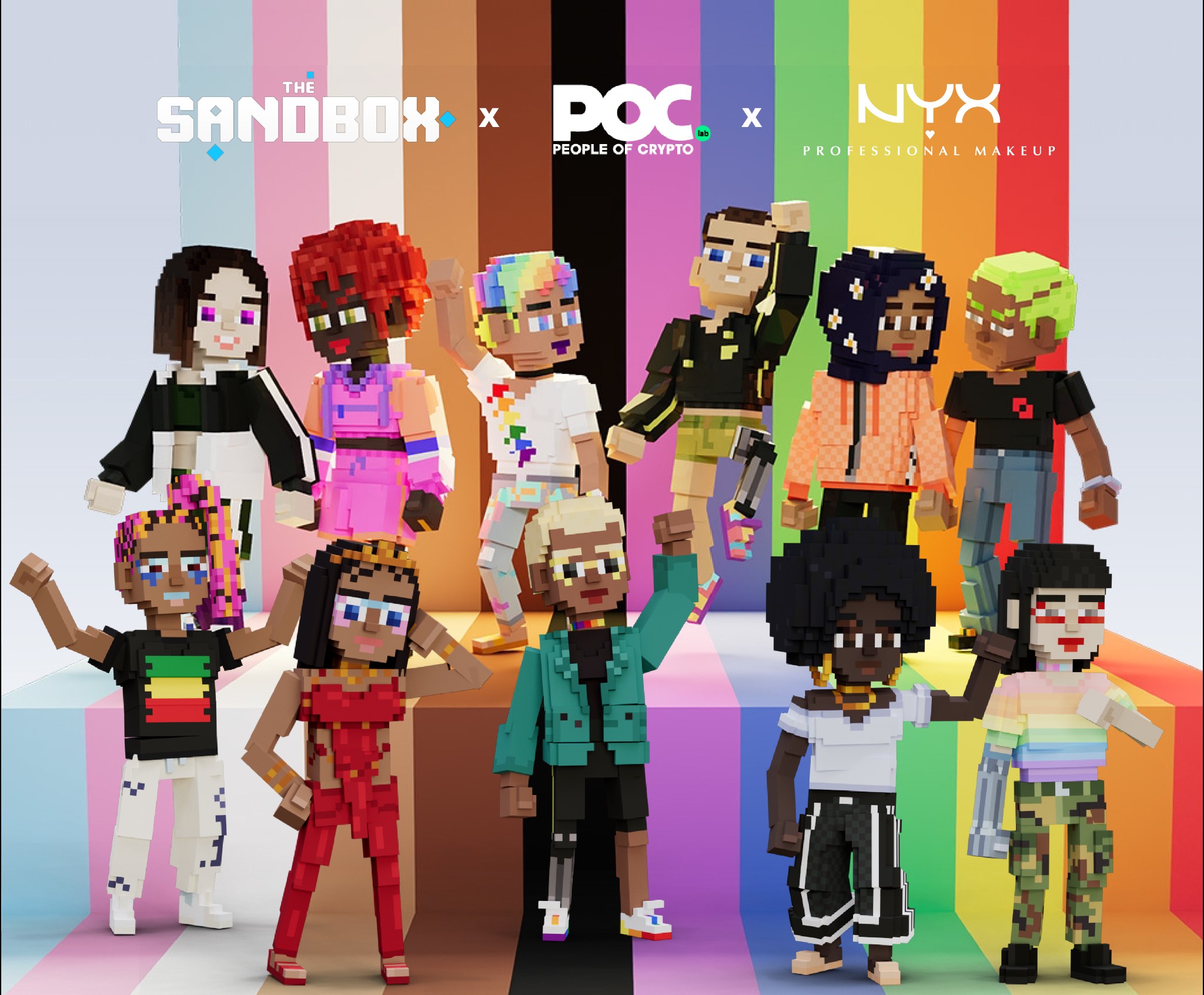
We found incredible statistics about diversity among millennial and GenZ gamers, yet we did not see this research reflected in the games produced.
Our key focus was creating a diverse, inclusive, safe and celebratory environment where members of BIPOC, disabled and LGBTQIA+ gaming communities could be represented in the worlds they regularly engaged with. We believe everyone should be empowered to be their most authentic selves in their real lives, in games they play and in any virtual environment.
We aimed to showcase diverse representation both with avatar character choices and within the gaming environment itself, building an LGBTQIA+ focused game experience that served as a safe space for self-expression and celebration for all. As the first-ever beauty brand to enter this gaming universe, our Metaverse Pride objective was to break the norms of everything the space had done before, helping to create a future where everyone felt seen and heard.
Pew Research confirms almost 40% of Millennials & GenZ in the US identify as LGBTQIA+. Intel research shares that over half of Black gamers are women, and 81% of GenZ actively engage in gaming. Additionally, in the U.S., 75% of gamers are of diverse backgrounds, but gaming environments didn’t reflect that. With Anti-LGBTQ bills ramping up, the lack of representation and diversity in the space was our No. 1 driving force.
We worked with our partners to tap into Web3 and metaverse communities on Discord and Twitter to understand sentiments around our audience. We reviewed avatar offerings and found very limited diversity.
We decided to transform gaming environments and character choices by producing the most diverse Web3 gaming experiences for Pride Month. We tapped a leading non-binary designer to create the most diverse traits to ensure communities being threatened IRL always have a voice and safe space to exist IVL.
We embarked on a mission to enter virtual worlds with purpose and authenticity, showcasing our core values through culturally-led gaming experiences, rather than through our products. We wanted to build a globally accessible safe space for all to celebrate Pride Month. Metaverse worlds are global playgrounds, accessible from anywhere, even places where it is illegal to be LGBTQIA+. We brought this cultural moment to the metaverse for the first time in history creating interconnectedness amongst our communities. In doing so, we became the first ever beauty brand to enter this metaverse, challenging the norms of traditional artistry, embracing voxel art and an entirely new landscape. We integrated at the very foundational levels of emerging technologies to ensure that virtual worlds can actually be built with equity from the start, introducing 8,430 diverse avatars to represent 84.3% of the global population of POC and LBGTQIA+ people.
In just three months, we built a gamified Pride Month experience and new tools for unstoppable self-expression. We engaged with both core gaming and web3 audiences alongside newbies in the space. We built a Pride party in the sky with gaming quests to encourage positive social interaction that transformed the in-game environment.
In the lead-up to the game opening, we launched a press campaign and community building initiative around our metadiverse avatar collection to drive excitement, sales, and attendance. We engaged in Twitter & Discord campaigns, tapping leaders in the web3 space to advocate alongside us and ensure strong press coverage. Key brand and partner executives showed up at cultural moments, including VivaTech Paris where we implemented a NFT ATM to encourage sign-ups. Following the initial avatar drop, we were integrated into Madonna’s Pride event at NFT.NYC, creating the first ever avatar IRL utility and experience for select holders.
The award-winning cultural experience invited communities from across the globe to join together to celebrate their differences during Pride Month. The collection sold 100% of its nonbinary avatars. The experience garnered 730M impressions, 17M visitors and 360K players.
Our avatars broke the mold of what we previously saw. We introduced 36 skin shades; every gender, including nonbinary characters; non-player characters in wheelchairs and avatars with prosthetic limbs; and an array of cultural identifiers, including character options with hijabs and turbans.
We showcased that make-up has no gender, sparking discussions on how consumer brands can successfully lead with culture and a shared mission to empower communities.
We transformed the way in which this virtual gaming world approaches DEI. Following our activation, our partner now implements the tools we created across all games and experiences, flipping the narrative and leading with inclusion, a first for the metaverse and Web3 gaming worlds.



